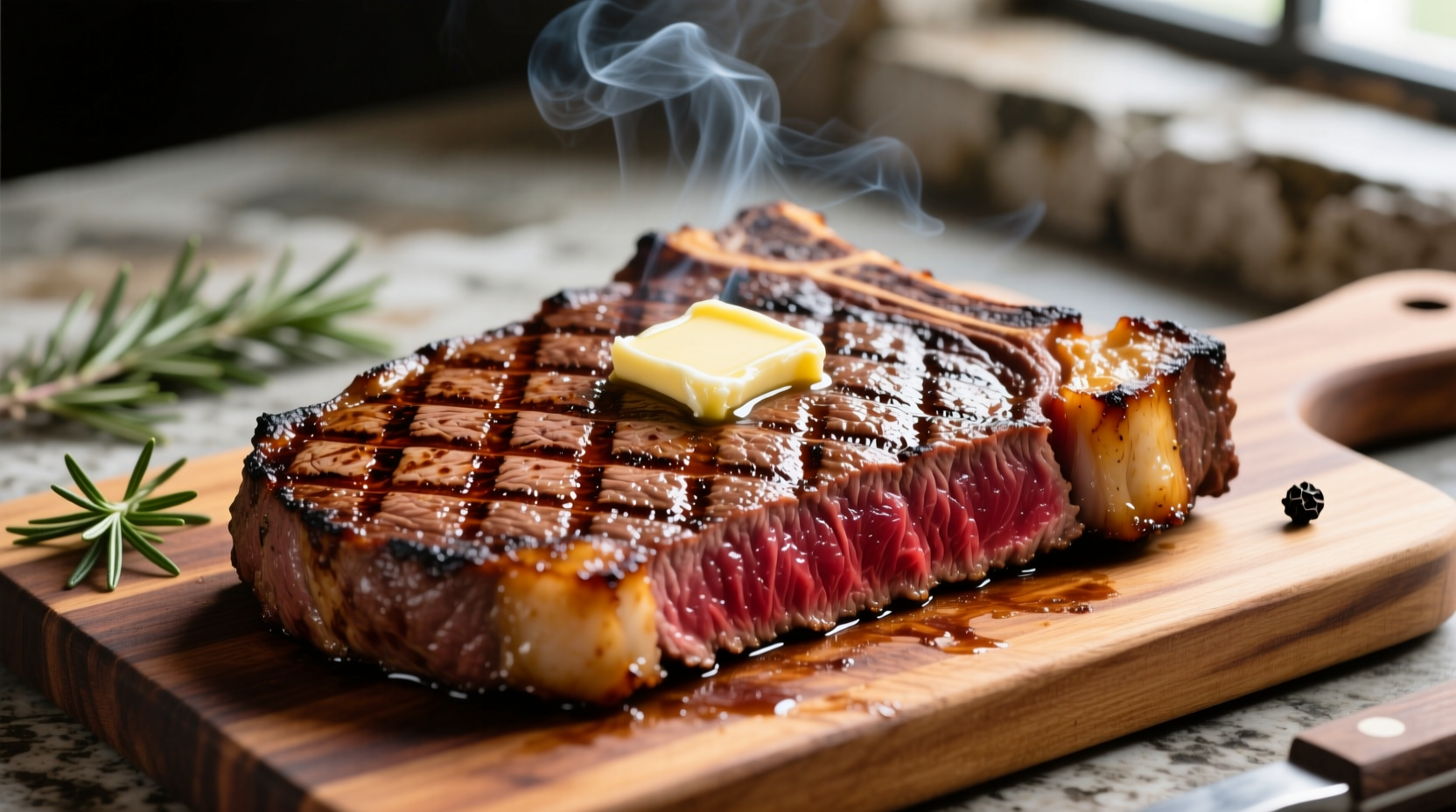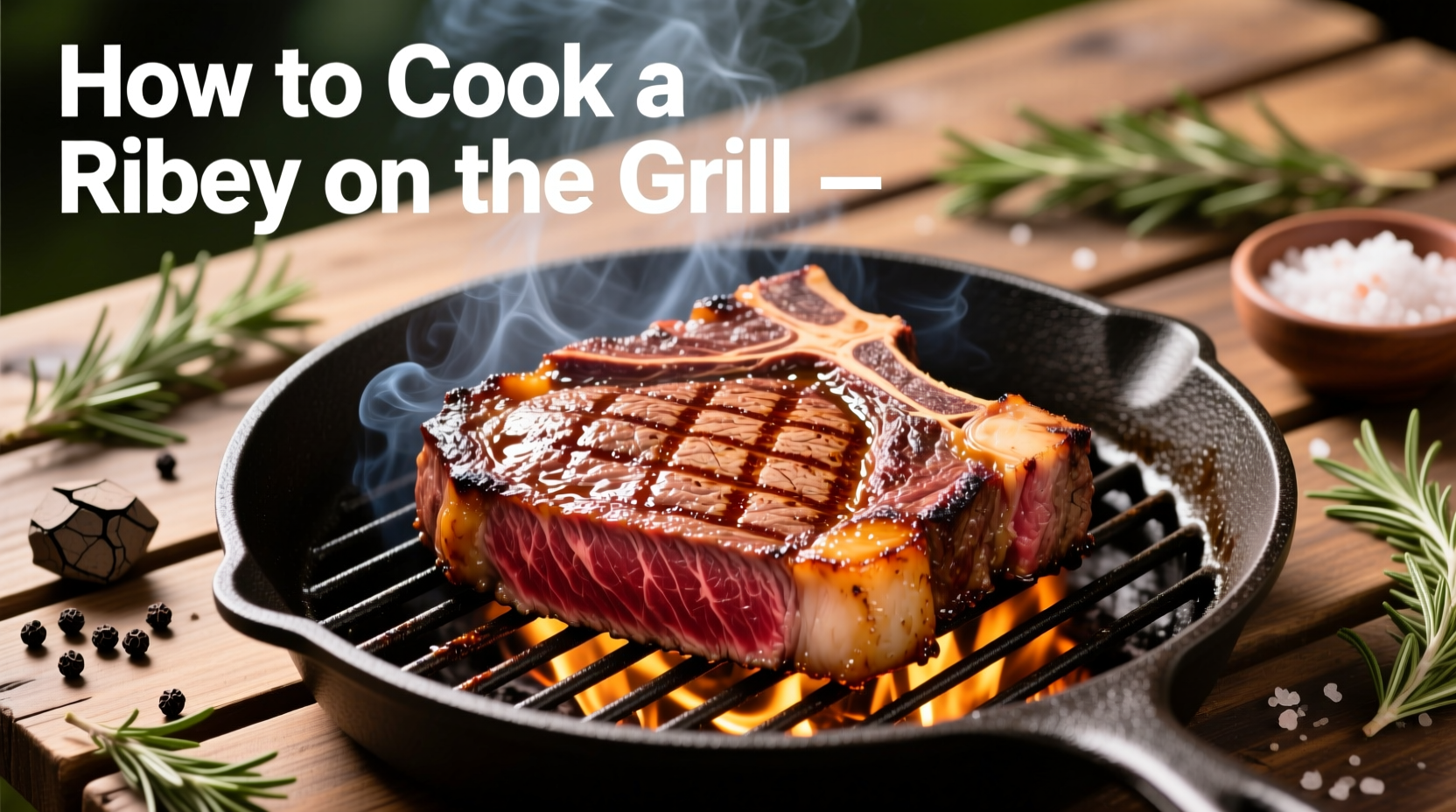The perfect grilled ribeye requires proper temperature control, seasoning, and timing. For a 1.5-inch thick steak, grill over high heat (450-500°F) for 4-5 minutes per side for medium-rare (130-135°F internal temperature), then rest for 10 minutes before slicing. Key steps include bringing steak to room temperature, using a meat thermometer, and proper resting to retain juices.
Mastering the Art of Grilling Ribeye Steak
Nothing compares to a perfectly grilled ribeye steak with its rich marbling, tender texture, and deep beefy flavor. This cut's generous fat content makes it ideal for grilling, but achieving restaurant-quality results at home requires precise technique. Follow this comprehensive guide to transform your backyard grilling into a culinary experience that impresses every time.
Why Ribeye Excels on the Grill
Ribeye steak, cut from the rib section between ribs six through twelve, contains abundant intramuscular fat that bastes the meat as it cooks. This marbling melts during grilling, creating unparalleled juiciness and flavor. Unlike leaner cuts, ribeye forgives minor timing errors while still delivering exceptional results when grilled properly.
Essential Equipment Checklist
Before you begin, gather these critical tools for success:
- Instant-read digital meat thermometer (non-negotiable for precision)
- Grill brush for proper grate cleaning
- Long-handled tongs (never pierce the steak with a fork)
- Aluminum foil for tenting during resting
- Wire rack for resting (prevents steaming)
Choosing Your Ribeye: What Matters Most
Not all ribeyes deliver equal results. Look for these quality indicators:
- Marbling: Abundant white flecks throughout the meat (USDA Prime grade offers the best)
- Thickness: 1.25-1.5 inches ideal for home grilling (thicker cuts require reverse-sear method)
- Aging: Dry-aged (28+ days) provides deeper flavor but costs more
- Color: Bright cherry red indicates freshness
| Grill Type | Preheat Temperature | Recommended Cooking Time (1.5") | Special Considerations |
|---|---|---|---|
| Gas Grill | 450-500°F | 4-5 min/side (medium-rare) | Use two-zone setup for flare-up control |
| Charcoal Grill | Medium-high heat | 5-6 min/side (medium-rare) | Arrange coals for direct/indirect zones |
| Pellet Grill | 500°F sear setting | 3-4 min/side (medium-rare) | Monitor smoke levels to avoid bitterness |
The Critical Preparation Phase
Proper preparation separates good grilled steak from exceptional:
- Temperature equalization: Remove steak from refrigerator 60-90 minutes before grilling. Cold steak cooks unevenly.
- Drying the surface: Pat thoroughly with paper towels - moisture prevents proper searing.
- Seasoning strategy: Apply coarse kosher salt (1 tsp per pound) 45 minutes before cooking. Add freshly ground black pepper just before grilling.
- Oil application: Lightly brush steak with high-smoke point oil (avocado or grapeseed), not the grill grates.
Grilling Timeline: From Fire to Perfect Doneness
Follow this precise cooking sequence for optimal results:
0-2 minutes: Place steak on hottest part of grill. Close lid immediately. Resist moving to develop proper sear.
2-4 minutes: Rotate steak 90 degrees for attractive crosshatch grill marks. Continue searing.
4-5 minutes: Flip steak using tongs. Sear second side with same technique.
5-9 minutes: Continue cooking second side, monitoring internal temperature. Move to indirect heat if flare-ups occur.
9-10 minutes: Remove when 5°F below target temperature (carryover cooking will raise it).
According to USDA Food Safety and Inspection Service guidelines, steaks should reach minimum internal temperatures of 145°F (medium) with a 3-minute rest period for food safety. However, ribeye achieves optimal tenderness at lower temperatures:
- Rare: 120-125°F (bright red center)
- Medium-rare: 130-135°F (warm red center) - recommended for best flavor/texture balance
- Medium: 140-145°F (pink center)

Avoiding Common Ribeye Grilling Mistakes
Even experienced grillers make these critical errors:
- Pressing the steak: Squeezes out precious juices - never flatten with a spatula
- Over-flipping: Flip only once for proper crust development
- Skipping the rest: Cutting too soon releases juices - minimum 8-10 minute rest
- Ignoring carryover cooking: Temperature rises 5-10°F after removal from heat
- Using wet wood chips: Creates bitter smoke that overpowers beef flavor
Resting and Serving for Maximum Impact
The final resting phase is where many home cooks lose perfection:
- Transfer steak to wire rack (not cutting board) to prevent steaming
- Tent loosely with foil - don't wrap tightly which causes sweating
- Rest for 10 minutes per inch of thickness (1.5" needs 15 minutes)
- Slice against the grain at 45-degree angle for maximum tenderness
- Serve immediately - ribeye's quality degrades quickly after cutting
For enhanced flavor, add finishing touches during the last minute of cooking:
- Compound butter (garlic-herb or blue cheese)
- Fresh rosemary sprigs placed directly on steak
- Thin lemon slices for subtle brightness
Troubleshooting Your Grilled Ribeye
Address these common issues with professional solutions:
| Problem | Causes | Professional Solution |
|---|---|---|
| Charred exterior, raw interior | Grill too hot, steak too cold | Bring steak to room temperature; lower heat slightly |
| Flare-ups causing burnt spots | Fat dripping on flames | Move to indirect heat zone; trim excess fat edges |
| Dry, tough texture | Overcooked; insufficient resting | Use thermometer; rest minimum 10 minutes |
Advanced Techniques for Next-Level Results
Once you've mastered the basics, try these professional methods:
- Reverse sear: For steaks thicker than 1.5", cook indirectly at 275°F until 115°F internal, then sear
- Butter basting: During last 2 minutes, spoon melted butter with herbs over steak
- Smoke infusion: Add mild smoking wood (cherry, oak) for subtle complexity
- Temperature mapping: Check multiple spots as ribeye has varying thickness











 浙公网安备
33010002000092号
浙公网安备
33010002000092号 浙B2-20120091-4
浙B2-20120091-4